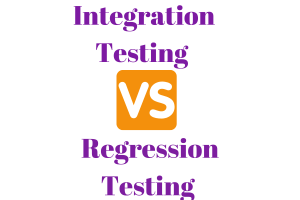When we talk about Agile methodology in software testing, a company will go through the testing stages. As the testing proceeds, testers encounter many bottlenecks, requiring different strategies and tactics.
As a result, operations and requirements change, cross-team collaborations increase, and several iterations should plug into the overall company’s testing software strategy.
For any new or revamped requirements, a software testing company will necessarily perform a contained chain of specially tailored tests to ascertain the degree of Quality Assurance attained, ensuring that the set standards and specifications are met. Each of the testing stages is designed to allow us to get past challenges, implement strategies, and evaluate software quality, both in the present and in the future.
This step by step procedure is called the Software Testing Life Cycle(STLC). Every stage has a different component being tested, and other results the tester hopes to achieve at the end of it.
Although personalized test suites are usually set up by various companies to suit their software build and what they hope to achieve, the personalized suits must retain the fundamental concepts of their procedures and expected results. Before continuing, read the 4 Levels of Software Testing: Performers, Steps, and Objectives to understand how each testing level is implemented.
What are the Testing Stages?
Software testing demands that testers stay very attentive to the most minutiae details and take on the project correctly. This makes the whole process very challenging and tedious. Consequently, testing is done in different stages to make the flow and documentation more accessible.
Generally, four main stages of testing can be performed on any build. They are the; Unit Tests, Integration Tests, System Tests, and Acceptance Tests.
To further simplify the process, the stages can be ordered, in twos, into secondary stages. The verification stage encompasses the unit and integration tests, and a Validation stage for the system and acceptance tests.
The verification stages make use of the white-box testing method and highlights on the development process. This simply means that the central structures are visible, and therefore require professional testers for the job.
On the other hand, the tests carried out at the validation stage use the black-box test method, and evaluate the finished build’s combined readiness to be released. Central systems are often concealed here, and testers do not usually have previous in-depth experience. The building features are cross-checked against the end-user specifications to verify their validity. Now, let’s expand more on the key test phases;
Unit
The very first stage of any application test. Here, the system’s separate modules will undergo assessments to see if they, individually, function correctly and to maximum capacity. Strictly considering the situation and program of the build, the units may vary significantly from one another. The tester must be a professional with vast knowledge, even on the most minute details, to successfully undergo this stage.
Whenever modifications are made, especially on the core of the software code, it’s necessary to apply unit testing. This is so that any underlying issues are resolved efficiently and on time.
Integration
This level of testing is mostly about verifying the modules and checking their readiness and their collective, integral cooperation. The modules are each tested separately and also as a group. This aids the testers to identify any issues with two or more components working together or individually to execute functions.
No matter how healthy any component seems to be, one can’t tell with all certainty if the software is working to its full potential until an integration test is performed.
Learn more about integration testing.
System
This testing level closely simulates the final production environment and is very significant as the final testing stage, especially when it needs to ensure that the applications under scrutiny always meet up to full functional requirements. This is where the test team ascertains if the integrated components are collectively showing optimal performance levels or not. For this, every software build must undergo testing up to this point, using client requirements as a bench-mark.
Learn more about system testing.
Acceptance
Some requirements to be implemented could be easily misconstrued before, or even during the development process after it commences. In any case, this happens, it’s difficult to point an error out since there is practically none that hinders normal functions. This is essentially why acceptance testing is undertaken with end-users’ help to test the software functions in a similar environment as the real end-users would. In general, acceptance testing ensures they work as they should and to maximum capacity.
Only then can the QA team rest assured of bringing the exact client vision to reality. The build can only proceed past testing and to the production and release phase when this step is marked as PASSED.
Learn more about acceptance testing
The usefulness of the STLC
Software can’t be said to have been completed and ready for production if it hasn’t passed through the test stages. Consequently, an application cannot skip any of the required stages before deployment, to go on to acceptance and production. Testing a software build or application is essential to pinpoint and prevent any defect of sorts from making it undetected into the production and release phase.
Suppose tests are not appropriately conducted before product release. In that case, this will most certainly leave an unwanted effect during client usage, and tackling the issues after release will, if nothing else, involve a higher financial and time cost, that could be curtailed by following up on the complete test process from the word go.
Testing will also see that the project retains the demanded quality throughout, even on to production, stays within the stipulated maintenance budget, and earns client trust by giving reliable and accurate outcomes. In software testing, the most feasible approach should be that one carries out the procedure quickly, thoroughly, and per the principles and stages of Agile.
Agile Methodologies
It’s plausible to argue that Agile testing has, in modern times, undoubtedly obsolete traditional testing owing to certain key factors, one of such being the flexibility to conform and remain on track even when the modifications and requirements are revisited as the development cycle continues.
In addition to that, the time frame taken for feedback and completion of the project is way shorter than it would take using the traditional method of testing. Because of these and more, this testing method called Agile has unsurprisingly made its way to the hearts of most QA teams to become a favorite for software development. While undergoing Agile testing, some stages and principles are observed, and they are as follows;
1. Requirement Assessment: This is the initial step/inception stage, and also where the project requirement, about to be undertaken, are evaluated for feasibility and authenticity. An up-to-date list is drafted for the perfectly workable bits of the given specifications. At the same time, stakeholders can be met and asked relevant questions regarding the project at hand, for a clearer perspective of their vision for the application. This will undoubtedly go a long way in familiarizing the tester with the specifications required for the build and the client’s primary business aims. Altogether, it makes it easier to tell when something is amiss and deliver a top-notch job on both the software build’s functional and nonfunctional fronts.
2. Planning: A proper testing plan not only requires a collective team effort, but it also requires adequate analysis of what the whole process entails from start to finish. Every single detail is taken into account and tracked all through till the end. The estimated monetary budget, effort, and human resources needed, and possible time-frame until completion of the procedure are taken into account and documented. Ideally, this is done by seasoned members of the group.
3. Test Case Development: Here, requirements are used as building blocks for test cases to ensure authenticity and make them as business-oriented as possible to achieve an aim similar to that of the client. Close workings and inter-communication between developers and testers are highly encouraged to generate accurate memorandum of data to be made use of.
4. Release Readiness: This stage has to do with testing the build-in ideal environmental conditions, preferably using automation tools that closely simulate the end-user environment, both physically as well as technically. The application is cross-examined in such an environment, checking all-round readiness for release.
This procedure demands that the team performing the tests must be made up of professionals, with a broad insight of the application specs in question, both inside and out, i.e., Hardware and Architectural components.
5. Execution: This is the stage where the team carefully executes the test plans and cases. The specifications are tracked and compared, side by side with the build, to verify healthiness, catch any lurking bugs and errors, and assist in deployment decisions. If any are found, they are immediately reported back to the development team to work on further. All cases are recorded; both the successful and failed cases are logged for reference purposes and monitored until the final phase is closed as successfully passed.
6. Cycle Closure: This is the final stage of the whole procedure. All the testing group members involved throughout the project process meet together, usually as a scrum or general meeting, to share intel and analyze the entire project. They also shed light on the difficulty and challenges faced in certain phases, see how they were successfully dealt with, and, if possible, rub minds together for better procedures in the future when faced with similar situations.
Shift-Left Approach
This is a not all-around conventional, but a useful approach towards testing. In this case, tasks are moved to the initial stages of the cycle for early testing. This means they are shifted to the left in the schedule of tasks for the process. This improves quality significantly, as critical issues are tackled head-on and early while preventing an increase in cost and drawback on release dates, should the bugs be attended to later. It also curtails the numerous errors that could end up becoming an almost insurmountable problem as they keep stacking up undetected through to the production stages.
More often than not, early testing advantages are overlooked, even as it is greatly encouraged by Agile testing, saves monetary cost, and ensures a stable application throughout the development phase. The reason is that it’s difficult to say precisely when bugs are introduced and invade the code core, or the application in general.
According to Steven Watts on the BMC blog, “It’s already confirmed that over 55% of all errors on any application surface at the requirement phase. Over 25% occur during the design; that’s over 80% happening just during the initial coding stages. Shift-left testing has its immense benefits when it comes to;
- Saving time on bulky problems that would be burdensome to deal with later on,
- Having a better grip on the reins of the process from the word go as tests are run early,
- Creating a more friendly workspace, especially between testers and developers as they will work hand-in-hand,
- Meeting deadlines and deploying builds on time as the bulky bits will all be taken care of from the start,
To get the ball rolling on the shift-left testing, organizations and teams need to keep to some standards, like;
- Getting everyone on the same page as to what procedures and coding bench-marks are implemented.
- Implementing early testing for each phase, especially in situations where Agile testing is barely an option.
- Making use of automation tools, which helps in Shift-left testing, makes the whole process less burdensome.
To Sum up
Every stage of testing is crucial and should be carried out. Do you want to start testing your software today? Ensure your QA team or software testing company you’ve hired goes through these four testing stages. Thanks for reading, and help share this article with your network if you enjoyed reading it









That was an wonderful article .. kudos
This is such a great article, it has literally summed up my whole bootcamp!